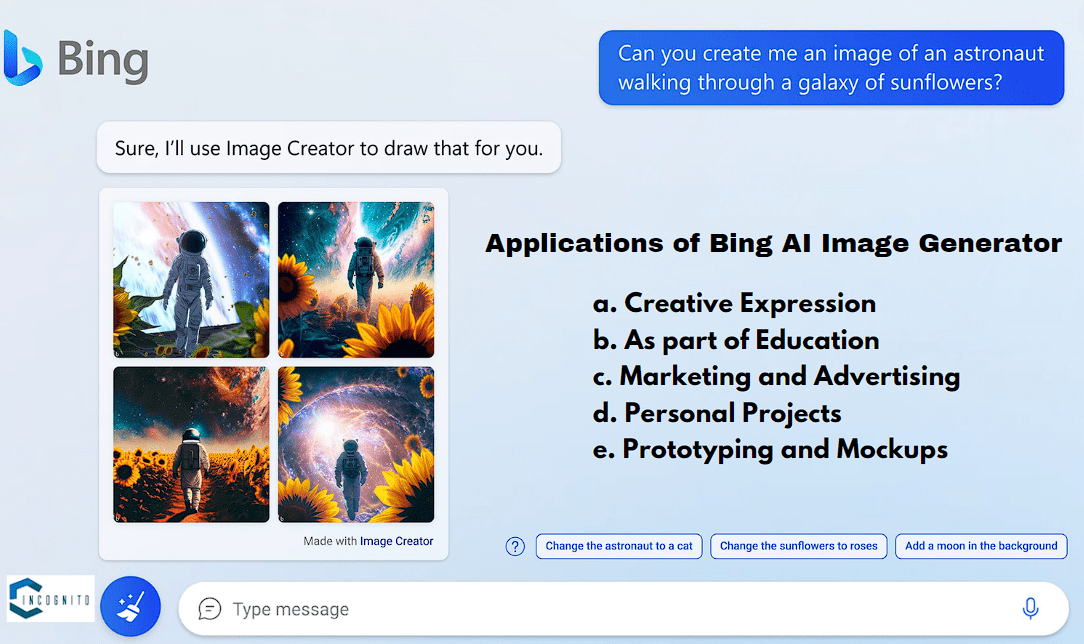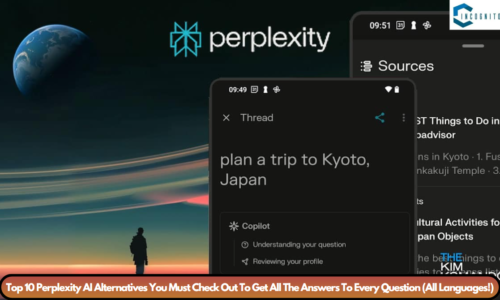
So, you are probably thinking of becoming Leonardo da Vinci as your over-thinking creative mind just came up with the idea of creating images from text!
Nice!
If you still don’t know, then be informed that there already exists an artificial intelligence image generator called Bing AI Image Generator that can bring out the Leonardo da Vinci type of artist from you by just inputting the text!
This article will elaborate on the insights into the capabilities of Bing AI Image Generator, its features, and how it can be applied for different purposes.
Keep reading, keep learning!
What is Bing AI Image Generator?
Bing AI Image Generator is an advanced software that generates visually stunning images, making the most of artificial intelligence provided in the text at the input. This allows users to give a textual description, after which they develop unique and personalized images that personify their ideas.
It incorporates a functionality powered through advanced machine learning algorithms, which analyze provided text and generate corresponding visual representations.
A brief Snippet of Bing AI Image Generator
- User-friendly Interface
- Detailed Descriptions
- Customization Options
- Batch Processing
- Easy Integration

Key Features of Bing AI Image Generator
Key Features of Bing AI Image Generator
1. User-friendly Interface:
The interface part of Bing’s AI Image Generator is very user-friendly, making the whole process of image creation straightforward for users of all levels.
2. Detailed Descriptions:
The user can provide detailed verbal descriptions just like Leonardo AI to guide the AI to create that image. The more detailed the input, the more detail there is in the generated image.
3. Choice of Customization Options:
There are multiple options for customization and provide the user with a way to change the generated images according to preference. The user can adjust settings such as the size of the image resolution, the aspect ratio, etc.
4. Batch Processing:
Bing AI Image Generator can generate images with different textual descriptions in batch form.
5. Seamless Integration:
Bing AI Image Generator easily integrates with the other Microsoft products, like Microsoft Office and Microsoft Designer. Users generate images with Bing AI Image Generator and paint those generated images into various applications and projects.

Applications of Bing AI Image Generator
Applications of Bing AI Image Generator
1. Creative Expression:
The Bing AI Image Generator motivates users to think out of the box and create a unique and innovative image based on the ideas or concepts of the user, just like they can do it in getimg ai. This app is most suitable for artists, designers, and hobbyists in implementing their ideas.
2. As part of Education:
Educators can make use of Bing’s AI Image Generator by creating visual aids and illustrations while preparing for a particular lesson, as these will make topics easier to understand and more interesting to the students.
3. Marketing and Advertising:
It enables the enterprise to make fancy graphics for marketing campaigns, posting on social media, and advertising material that stands out among the stern competitors. Moreover, you can use this AI with AI marketing tools to increase your reach to the intended audience.
4. Personal Projects:
Users can also create personalized images for their personal needs, such as designing cards, invitations, or even customized profile pictures for social media
usage.
5. Prototyping and Mockups:
Designers and developers will very quickly be able to use Bing AI Image Generator in order to create mockups and prototypes, which afterward can be easily integrated into their designs. Such a facility is going to ease the design work and provide an opportunity for cooperative work with clients and stakeholders.

Limitations and Considerations
Limitations and Considerations
While Bing AI Image Generator is a highly powerful tool, there are some limitations and disadvantages of this tool:
1. Accuracy and Realism:
The level of realism in the generated images can sometimes be inversely related to the complexity of the input text in describing them.
2. Copyright, Intellectual Property:
Users of such tools should consider the copyright and intellectual property associated with the generated images, as some elements are restricted under the law.
3. Potential Biases:
As with any AI model, Bing’s Image Generator can hold certain biases depending on the material the model was trained on. In using this tool, the user should be aware of these possible biases and their ramifications.
4. Privacy and Data Security:
Users should be informed about privacy and data security while using the tool, as their textual descriptions and generated images might get stored or processed by Bing’s servers.
Future Developments and Trends
Considering the continuous development of AI technology, it can be assumed that the future of Bing’s AI Image Generator is going to be changing and somewhat up for the better as well. Some of the likely developments and future trends would be:
1. Better Realism and Precision:
The realism and precision of the generating images can be taken to a new horizon of its time using the aid of better upcoming machine learning algorithms and better, diversified datasets.
2. Improved Capabilities:
The tool could have supplemental features for creating images in specific styles, like impressionist, cubist, or even to create animations based on textual descriptions.
3. Multimodal Integration:
The AI Image Generator could integrate with other AI technologies like natural language processing and speech recognition, so a user would be able to create an image by means of voice commands just like Fliki AI or, otherwise, have an image created through a mix of text and audio.
4. Ethical Considerations:
With the greater use of AI-generated images, in the future, ethical issues regarding misuse and relation of the technology to human creativity and employment will be raised to a greater concern.
Conclusion
The AI Image Generation from Bing is a new advancement in the domain of artificial intelligence and image generation. It allows users to generate images based on textual descriptions, enabling creativity in more ways than ever. The technology will advance further, providing even more impressive and innovative approaches to AI-generated images.





